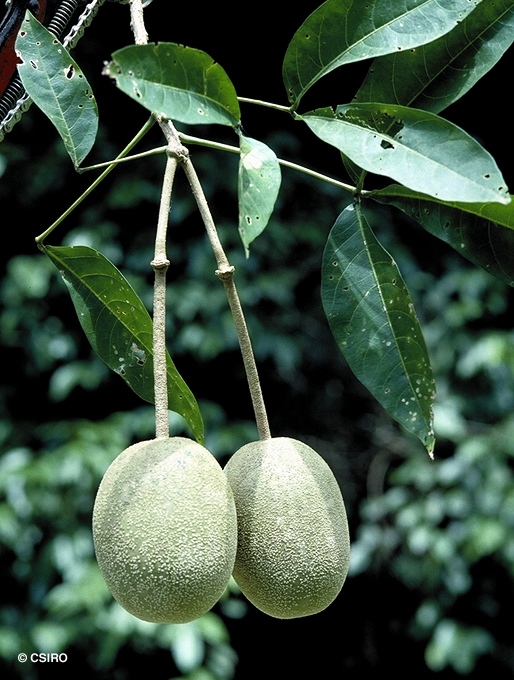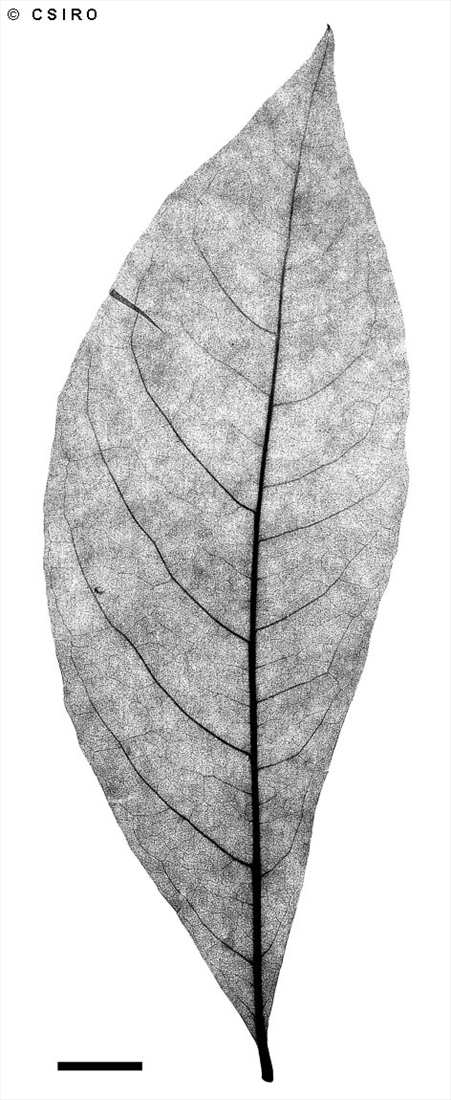Australian Tropical Rainforest Plants - Online edition
Crateva religiosa G.Forst.





Forster, J.G.A. (1786) De Plantis Esculentis : 45. Type: Reperitur ad Coemeteria insularum o Taheiti et Societatis, culta et deorum numini sacra.
Sacred Garlic-pear; March Dalur
Seldom exceeding 30 cm dbh. Blaze odour noticeable but difficult to describe.
Flowers large and showy, the petals turning +/- orange with age. Petals large, e.g. about 5-6 cm long overall, two petals large and two smaller. Petals clawed. Staminal filaments about 6-8 cm long, red or purple in colour.
Cotyledons about 20-34 x 7-9 mm, +/- strap-like, thick and fleshy, flat on the upper surface and rounded on the lower surface. Venation longitudinal but obscure. Two cataphylls or axillary buds often produced just above the cotyledons. First pair of true leaves with narrowly lanceolate or elliptic leaflets. At the tenth leaf stage: lateral leaflets unequal-sided for at least half their length; leaflets sessile, stipules very small, only visible with a lens; stem usually marked with conspicuous pale lenticels. Seed germination time 15 to 20 days.
Occurs in NT and CYP in the Iron Range and McIlwraith Range areas. Altitudinal range from near sea level to 150 m. Grows near watercourses in rain forest and gallery forest. Also occurs in the Indian sub-continent, SE Asia, Malesia and the Pacific islands.
This species has a wide distribution from India to the Pacific Islands. In both India and the Pacific Islands this species is credited with occult powers and consequently was planted around temples and because of this association the specific epithet was chosen by the original author G. Forster. Jacobs (1964).
This small tree has considerable horticultural potential because of its showy white flowers produced while it is leafless. It is often cultivated where it naturally occurs from India to SE Asia.
The leaves of this species are reported as skin irritants. Quisumbing (1951) & Nadkarmi (1976).





